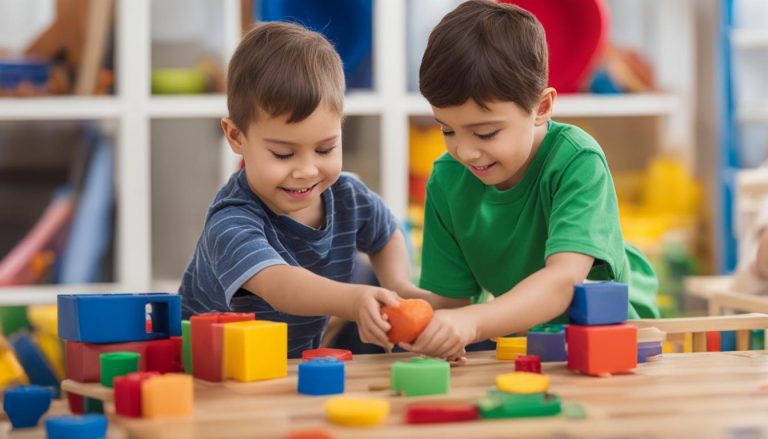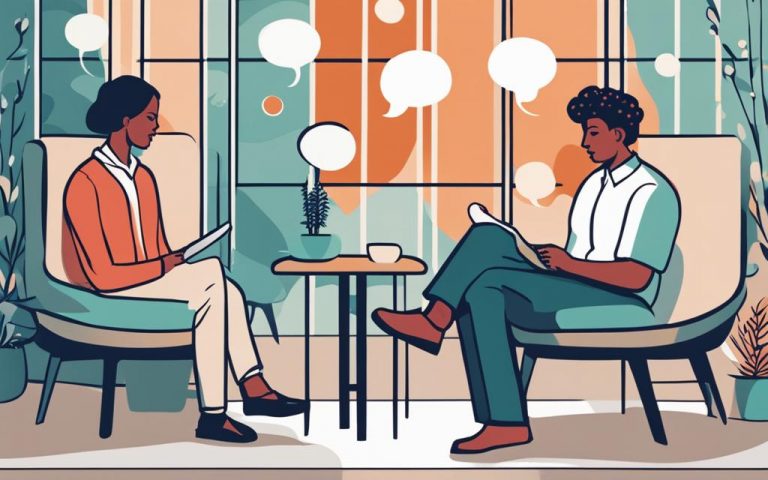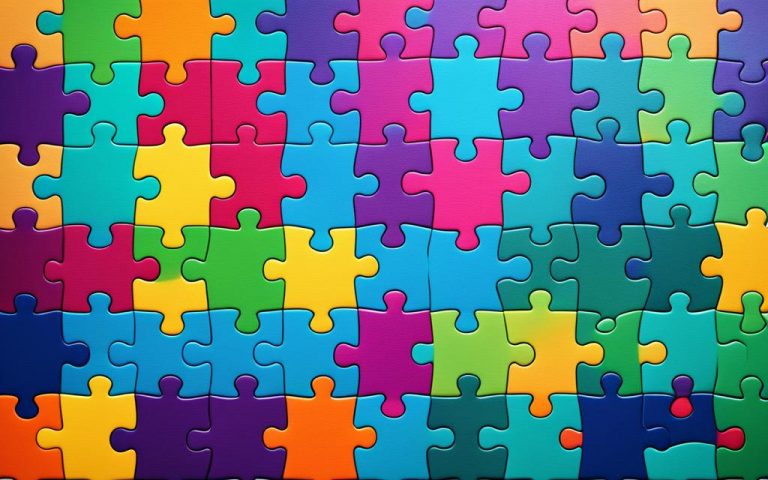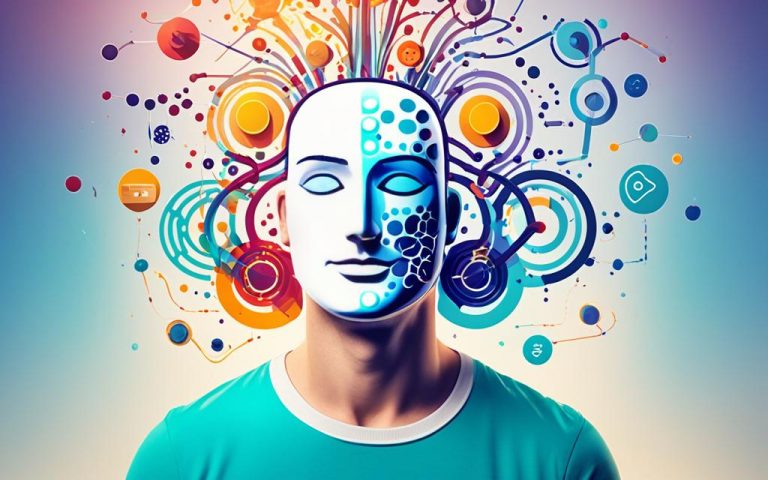Engaging Seniors with Animation Elements Activation
Engaging Seniors with Animation – As the demographic landscape shifts towards a more pronounced elderly population, the activation of elderly people with elements of animation has emerged as a groundbreaking approach to invigorating senior citizens engagement within our communities. Imbuing elderly wellbeing programs with animation not only creates dynamic, captivating experiences for participants but also caters holistically to their physical, emotional, and cognitive faculties. As we delve into this concept, you’ll gain insights into how animation can be harnessed to foster wellbeing and joy among our older generation.
Your exploration into this fusion of creativity and care will unpack the myriad ways in which animation can uplift and transform the lives of our treasured seniors. From momentary joy to long-lasting cognitive benefits, the amalgamation of these visual arts into elderly care is something to be both celebrated and expanded upon – and it is our intention to guide you through this innovative journey.
Key Takeaways
- The potential of animation to create enriching, stimulating environments for seniors.
- The significance of tailoring elderly wellbeing programs to enhance quality of life.
- Understanding the influence of animation on improving cognitive and emotional aspects in seniors.
- Insights into aging populations and the benefits of contemporary engagement strategies.
- How animation serves as a bridge to connect older adults with new experiences and joy.
The Importance of Engaging Senior Citizens
As we delve into the nuances of elderly care, it becomes increasingly clear that enriching and stimulating environments are not mere luxuries but essential components for maintaining the mental health of seniors. The enhancement of cognitive functions and the mental wellbeing of our elderly population can be significantly fostered through thoughtful, interactive activities designed with their needs in mind.
The Need for Stimulating Environments in Elderly Care
Stimulating environments serve as the cornerstone for enhancing the quality of life amongst the elderly. Such environments, replete with engaging stimuli, not only alleviate the monotony that can come with age but also provide vital cognitive challenges that promote mental sharpness and social interaction. It is here that the intricacies of elderly care reveal a profound truth: an environment that encourages active participation can be transformational in the lives of senior citizens.
Impact of Animation on Elder Cognitive Functions
In an age of digital proliferation, animation has emerged as an unexpected yet effective tool for stimulating elder cognitive functions. Through vibrant visuals and captivating narratives, animation ignites the imagination and provides a powerful stimulus for memory retention and cognitive activity. Research studies suggest that this medium can act as a bridge to past experiences, triggering memories and emotions that may otherwise remain dormant.
Benefits of Engaging Activities for Mental Health
Interactive activities tailored for the elderly, particularly those integrating elements of animation, hold promise for bolstering mental health in seniors. Participation in these activities can combat the isolation and depression that too often accompanies old age, fostering a sense of purpose and community. As a result, seniors engaged in these interactive experiences typically report an enhanced sense of wellbeing and an overall improvement in their quality of life.
In conclusion, investing in interactive activities for elderly individuals is an investment in their cognitive resilience and emotional fulfilment. It is upon the pillars of engaging senior citizens that the edifice of comprehensive elderly care must be constructed, ensuring a society where the golden years are truly golden.
Understanding the Connection between Animation and Elderly Wellbeing
The innovative fusion of animation with elder care is transforming the landscape of senior wellness. This dynamic approach proffers a plethora of benefits, including memory stimulation and an enhanced sense of joy and curiosity in seniors. As we delve deeper into this concept, you will discover how animated activities are not just pastimes but significant tools for enriching the lives of our cherished senior population.
How Animation Sparks Joy and Curiosity
Animation possesses an intrinsic charm that transcends age barriers, invoking a sense of wonder and excitement. For seniors, especially, animated content can be a beacon of light, rekindling emotions and stimulating mental faculties. The vibrant colors, intriguing storylines, and familiar characters often resurrect a sense of nostalgia, fostering an engaging atmosphere that encourages social interaction and emotional expression. Studies indicate a distinct uptick in overall happiness when seniors partake in animated activities — a testament to the medium’s potential as a source of enrichment in senior care.
Animation as a Pathway to Memory Stimulation
Memory stimulation in elderly individuals is of paramount importance, and animation can serve as an excellent conduit for such cognitive engagement. By anchoring new information with visual and auditory stimuli, animation enhances retention and recollection — a technique known as ‘multimodal learning’. The stories and characters often act as mnemonics, aiding the recall of memories and the formation of new ones. Academic research underscores the efficacy of animation as an educational and therapeutic aid, helping seniors to maintain cognitive faculties and reminisce about past experiences in a supportive setting.
| Activity | Benefits | Tools Used |
|---|---|---|
| Animated Storytelling | Promotes creativity, triggers memories | Digital slideshows, voice-over narratives |
| Character Interaction | Enhances social skills, reduces feelings of isolation | Virtual reality headsets, interactive screens |
| Music & Animation Fusion | Aids memory retention, improves mood | Animated music videos, sing-along apps |
| Animation-Based Games | Stimulates cognitive abilities, encourages motor skills | Tablets with gaming apps, motion-sensing technology |
Engaging older adults with animated activities is not only beneficial for their cognitive abilities but also integral to nurturing their overall wellbeing. As we strive to innovate in senior care, embedding such animated activities within daily routines could be a pivotal step towards enhancing the quality of life for our seniors.
Activation of Elderly People with Elements of Animation
As we delve into the promising intersection of animation and the activation of elderly people, it becomes clear that incorporating elements of animation offers a myriad of benefits. Not only do such activities provide a sense of enjoyment and creativity, but they also actively contribute to cognitive stimulation. Particularly, elderly animation workshops have shown remarkable efficacy in enhancing daily life for seniors. Here, we’ll outline practical ways to weave these elements into the fabric of elderly care programs.
For caregivers and program coordinators striving to inject life into the everyday experiences of our senior communities, the key lies in the thoughtful integration of animated activities. This approach should not merely entertain; it should also foster connection, recall, and motor skill refinement. Below are several dynamic strategies to step into the world of animation with your elderly cohorts.
- Storytelling Through Animation: Encourage seniors to share their life stories which can then be transformed into simple animated sequences. This not only preserves cherished memories but also incites a sense of achievement.
- Animation Appreciation Sessions: Screening classic and contemporary animations can spark conversations and emotional connections, resonating with the seniors’ own experiences.
- Interactive Animated Games: With technologies like motion sensors, create engaging animated games tailored to the mobility levels of participants, promoting light physical exercise and mental alertness.
Conducting successful elderly animation workshops requires understanding your audience’s preferences and tailoring your approach accordingly. Below is a structured overview of the potential workshops and the elements they might encompass, providing a clear guide for introducing animation to seniors:
| Workshop Theme | Activity Details | Expected Outcomes |
|---|---|---|
| Creative Animation Crafting | Creating physical animation models from clay or paper. | Enhanced fine motor skills and artistic expression. |
| Digital Storytelling | Using software to animate personal stories or fictional tales. | Boosted digital literacy and cognitive engagement. |
| Music & Animation Fusion | Choreographing animation sequences to favourite tunes. | Improved mood and rhythmical coordination. |
With the right support and expertly designed programs, the activation of elderly people with elements of animation can reshape the landscape of senior citizen engagement. It forges paths toward a livelier, heartier ageing process, ushering a blend of technology and tradition into the golden years of our respected elders.
Innovative Animated Activities for Seniors
Discovering stimulating and innovative animated activities for seniors is essential in fostering senior citizens engagement. The burgeoning field of animation provides a unique avenue to enhance the daily experiences of our elders. By tailoring these animated activities to meet the diverse abilities and interests of senior individuals, we create opportunities for joy, learning, and social interaction.
From digital storytelling sessions to interactive games, the possibilities are boundless when integrating animation into senior programmes. These activities are not just diversions; they are carefully designed to promote cognitive stimulation, emotional health, and a sense of connection with others.
| Activity | Description | Benefits |
|---|---|---|
| Animated Storytelling | Using animation to bring stories to life, often with the help of narrators or interactive elements. | Sparks imagination and reminiscence, fosters emotional connection. |
| Virtual Reality Exploration | Seniors explore different worlds and scenarios through VR headsets. | Provides sensory stimulation, aids in memory recall, and offers new experiences. |
| Animated Exercise Routines | Fun and engaging workout sessions animated to captivate the users’ interest. | Encourages physical movement, improves mobility and balance. |
| Creative Animation Workshops | Workshops where seniors learn to create simple animations using user-friendly software. | Enhances technological skills, promotes creativity, and increases self-esteem. |
You may be surprised by the positive impact these animated activities for seniors can have, not only on the individual’s mood but also on their overall engagement with life. With a combination of technology and creativity, senior citizens engagement becomes an enriching and joyful experience for all involved.
Designing Elderly-Friendly Animation Workshops
The beauty of animation lies in its capacity to transcend age barriers and offer accessible entertainment and learning experiences. When crafting elderly animation workshops, it’s paramount to consider the distinct needs and capabilities of seniors to ensure they are both enjoyable and viable. In the following sections, we will outline essential elements and adaptations vital to delivering accessible animation experiences for elderly individuals.
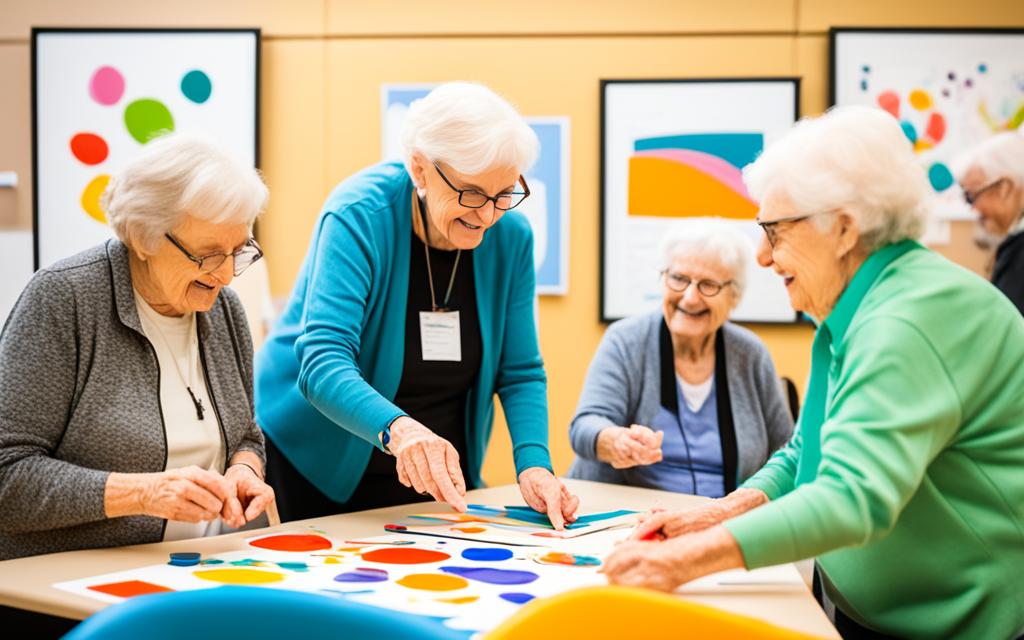
Key Elements in Creating Accessible Animation Experiences
To ensure that animation workshops are inviting and inclusive, several critical elements must be considered:
- Venue accessibility: Ensure the location is equipped with ramps, elevators, and comfortable seating
- Clear visual and audio components: to suit varying levels of sensory capabilities
- Flexible pacing: allowing participants to engage at their own comfort level
- Presenting familiar themes: to evoke nostalgia and stimulate memory
By integrating these key aspects, animation workshops can be tailored to foster an engaging and supportive environment for senior individuals.
Adapting Animation Techniques for Different Abilities
Diverse abilities and preferences within the elderly population necessitate careful consideration when adapting animation activities. Here are some strategies and adaptations:
| Ability Level | Adaptation Strategy | Techniques and Tools |
|---|---|---|
| Limited Mobility | Provide animation software that can be navigated using accessible devices | Touchscreen tablets, simplified animation apps |
| Visual Impairment | Utilize high-contrast visuals and audio descriptions | Magnifying tools, screen readers |
| Reduced Cognitive Function | Offer step-by-step guidance and repeated demonstrations | Storyboard templates, memory aids |
| Varied Learning Speeds | Implement adjustable difficulty levels and one-on-one support | Customisable project complexity, personal tutors |
With thoughtful modifications, these workshops can become a creative and enriching experience for seniors of all abilities, fostering greater inclusivity in accessible animation experiences for elderly participants.
Integrating Animation into Regular Elderly Care Programmes
As you explore the innovative world of elderly care, it becomes evident that integrating animation into regular routines offers substantial benefits for senior wellness. Animated elements do not merely act as periodic entertainment but can enhance the quality of life when included as part of ongoing care programmes. Through consistent inclusion of regular animated programmes, you help foster a sense of engagement and trigger positive stimuli which are crucial for maintaining cognitive function and emotional health.
Animation is a versatile tool that can be tailored to fit into the existing frameworks of care homes and wellness centres. Its adaptability allows for a wide range of activities that can cater to various interests and abilities among the senior population. To effectively integrate these programmes, consider the following strategies:
- Assessment of Needs: Understand the preferences and capabilities of the senior community you are working with. This initial step ensures that the animation programmes developed will be relevant and enjoyable.
- Consistent Scheduling: Regularity is key. Scheduling frequent animated sessions contributes to a structured environment that seniors can look forward to and rely upon.
- Professional Collaboration: Involving professionals from both the animation and healthcare sectors can enhance the delivery of content, ensuring that it is both engaging and therapeutically beneficial.
- Feedback Mechanisms: Implementing channels for feedback allows for continual improvement and ensures that the programmes are meeting their objectives effectively.
Moreover, the consistent participation in animation-based activities is paramount. Much like any therapeutic regimen, the longevity and frequency of exposure to stimulating content are what truly generate tangible improvements in wellbeing. The table below illustrates how regular animated programmes can be interwoven into the daily life of senior communities and what each inclusion aims to address:
| Time of Day | Activity | Objective |
|---|---|---|
| Morning | Animated Stretching Routine | Mobility & Alertness |
| Afternoon | Anime-Themed Reminiscence Therapy | Memory Recall & Socialisation |
| Evening | Relaxing Animated Visuals | Relaxation & Sleep Preparation |
In conclusion, the potential of animated programmes in enhancing the everyday experiences of the elderly should not be underestimated. The integration of such innovative approaches into elderly care programmes bears the promise of revitalised environments where joy, creativity, and interpersonal connections flourish, collectively improving the fabric of senior wellness.
Case Studies: Successful Elderly Engagement through Animation
The implementation of senior community animation has paved the way for not only an uptick in socialisation but also meaningful personal transformation through animation. In the realms of elderly care and engagement, animated elements have proven themselves as powerful tools, creating lasting impacts on the lives of seniors. Let’s delve into real-world scenarios where animation has catalysed a positive change.
Animating Senior Community Spaces
Utilising various forms of animation to enliven communal areas, several residential facilities for the elderly have transformed their spaces into hubs of vibrant activity. By embedding animated features into the environment, senior residents find themselves more inclined towards regular social interaction and participation in group activities.
“Seeing the elderly react to our animated gardens and walls has been truly heartwarming. It’s as if a new zest for life has been instilled in our community.” – Senior Care Facility Manager
Such testimonials reflect the positive atmosphere generated by the creative inclusion of animation. The next table illustrates a comparative insight into how two senior living communities have embraced animation to revamp their communal spaces:
| Community Space | Pre-Animation State | Post-Animation Implementation | Noted Improvements |
|---|---|---|---|
| Main Lounge Area | Underutilised, quiet | Lively with animated projections | Increased resident gathering and interaction |
| Dining Hall | Functional with no aesthetic appeal | Interactive animated features on walls | Enhanced mealtime experience and socialisation |
| Outdoor Garden | Seldom visited | Equipped with animated light paths | More residents spending time outdoors |
Personal Stories of Transformation with Animation
Personal transformation through animation isn’t just a catchphrase but a palpable change witnessed within individuals who engage with it. Here are a couple of genuine cases:
- Margaret, a resident at Cedarview Homes, once spent her days largely in solitude. The introduction of an animated story-corner brought a remarkable change in her daily routine. She now looks forward to the storytelling sessions that make classic tales come to life.
- George, formerly disinterested in communal activities, found a new hobby in digital painting when the facility created an animated art workshop. It fostered not just a skill, but a source of joy and self-expression for him.
These instances are not isolated; they signify a broader trend wherein technology and creativity intertwine to offer seniors a fresh perspective on life and a renewed sense of community belonging.
Assessing the Impact of Animation in Senior Wellbeing Programs
When it comes to enhancing the lives of our seniors, understanding the effectiveness of innovative approaches is crucial. An impact assessment of animation activities within senior wellbeing programs is not just beneficial but necessary for refining these initiatives. This examination delves into various methods that help quantify and qualify the success of such interventions on elder care.
Quantitative analysis might involve metrics such as the number of participants engaged, frequency of activities, and even measurable health indicators before and after the animation activities. Qualitative analysis, on the other hand, draws on personal anecdotes, self-reported experiences, and the overall mood and social engagement level of participants. Combined, these techniques offer a comprehensive view of how animation is reshaping senior care.
| Assessment Method | Details | Benefit to Senior Wellbeing Programs |
|---|---|---|
| Participant Surveys | Feedback forms post-activities | Direct insight into participant enjoyment and perceived benefits |
| Health Indicator Tracking | Monitoring blood pressure, stress levels, etc. | Tangible evidence of health improvements |
| Attendance Records | Frequency and regularity of engagement | Indicator of sustained interest in animation activities |
| Behavioural Observations | Note changes in social interaction, mood, and behaviour | Qualitative measure of improved mental health and socialisation |
Feedback from the elderly about their experiences is crucial. A poignant testimonial might reveal more about the program’s impact than raw data could suggest. Peer reviews within the community can also offer insights into the social impact that animation-led activities bring to senior wellbeing programs.
“These animation sessions have brought a new zest to my life; I’ve never felt more connected and engaged in my community.” – Participant feedback
Ultimately, an effective assessment captures the transformative potential of animation within elder care. You should consider both the numbers and the stories behind them to truly comprehend the impact. While it may be challenging, the rewards of informed program tailoring are invaluable, fulfilling the overarching aim to uplift the quality of life for seniors.
How to Encourage Participation in Animated Activities
Engagement in animated activities offers a potent means of enhancing the lives of individuals, particularly within senior communities. It fosters a vibrant atmosphere that stimulates both the mind and body. However, fostering this participation is not without challenges. Let’s uncover how to inspire seniors to partake in animated activities, facilitating vibrancy and joy within their everyday lives.
Overcoming Resistance to New Forms of Engagement
Resistance to change is a natural human instinct, especially amongst the elderly who may find comfort in routine. Encouraging participation in animated activities begins with understanding and addressing the root causes of this hesitation. Simplifying the process, offering clear benefits, and creating a warm, inviting environment can significantly reduce barriers to entry.
Remember that patience and empathy are key when introducing new activities. It’s not just about conveying the fun aspect but also about ensuring a sense of security and belonging.
Utilising Peer Support and Group Dynamics
Peer support plays a pivotal role in promoting engagement. Witnessing peers enjoying an activity can be a powerful motivator. It’s about creating a community where participants support and encourage one another. Furthermore, capitalising on group dynamics can convert passive interest into active participation, turning animated activities into social events that members of the community look forward to.
As you consider these strategies, reflect on the diverse needs and preferences within your group. Tailoring animated activities to suit these individual characteristics will not only enhance participation but will also ensure a meaningful and lasting impact on the wellbeing of the elderly.
Conclusion
As we approach the frontier of innovative elderly care, the potential of animation stands out significantly. Throughout this article, we’ve delved into the myriad ways in which animation can energise and enrich the lives of senior citizens, from enhancing cognitive functions to boosting emotional wellbeing. Central to these initiatives is the development of sustainable senior engagement models that can be seamlessly integrated into regular care programmes. The bright and dynamic nature of animation holds promise not just for momentary entertainment but for sustained engagement in elderly communities across the United Kingdom.
Future Prospects for Animation in Elderly Care
Looking ahead, the future of animation in elderly care is indeed promising. Technology advancements are continually expanding creative horizons, providing unprecedented opportunities to craft engaging narrative experiences tailored to senior audiences. As research further validates the benefits of animated content for the elderly, we are likely to witness its broader adoption in care strategies aimed at improving life quality. This shift towards integrating animation into elderly care highlights a progressive commitment to exploring new modalities of engagement that resonate with senior individuals on multiple levels.
Creating a Sustainable Model for Senior Citizen Engagement
The challenge that lies ahead involves constructing robust and sustainable senior engagement models that strategically utilise animation as a core component. These models should prioritise accessibility, customisation, and scalability to accommodate the diverse needs and preferences of the ageing population. The interplay between care practitioners, animators, and senior participants will be crucial in shaping environments where animation is not just a sporadic delight but a consistent feature of daily life, fostering a spirited and vibrant community spirit. Your role, as a stakeholder in elder care, is instrumental in bringing these animated visions to life, crafting legacies of joy and interactive companionship for the cherished seniors in our society.
FAQ – Engaging Seniors with Animation
What is the role of animation in activating elderly people?
Animation plays a vital role in creating stimulating environments that cater to the physical, emotional, and cognitive needs of seniors. It helps in engaging them in a way that sparks joy, curiosity, and can even act as a pathway to memory stimulation.
Why is it important to engage senior citizens in stimulating activities?
Engaging seniors in stimulating activities is crucial for their overall wellbeing. Such engagement can have a positive impact on their cognitive functions, support mental health, reduce feelings of isolation and depression, and lead to an improved quality of life.
How does animation impact elder cognitive functions?
Animation engages the brain in different ways and can positively affect cognitive functions among the elderly. It encourages active participation, which can improve attention, problem-solving skills, and memory retention, as supported by research studies.
Can you provide examples of animated activities for seniors?
Animated activities for seniors can include storytelling with animated visuals, creating simple animations during workshops, or even watching and discussing animated films tailored to their interests and abilities.
How are elderly-friendly animation workshops designed?
Elderly-friendly animation workshops are designed by including key elements that ensure they are accessible, like adjusting the pace of the workshop, using larger visual aids, and adapting animation techniques to cater to different physical and cognitive abilities.
In what ways can animation be integrated into regular elderly care programmes?
Animation can be integrated into regular elderly care programmes by incorporating it into daily or weekly activity schedules, using animated storytelling or collaborative animation creation as regular sessions, and ensuring consistency to build a routine for the participants.
How can senior community spaces be animated to promote engagement?
Senior community spaces can be animated by introducing colourful visual elements, interactive digital displays, and regular animation-themed events that encourage socialization and participation in a community setting.
What approaches can be taken to assess the impact of animation on senior wellbeing?
The impact of animation on senior wellbeing can be assessed through both quantitative and qualitative methods, such as feedback surveys, observational studies, behavioural assessments, and gathering anecdotal evidence from the seniors involved.
How can caregivers encourage participation in animated activities among seniors?
Participation in animated activities can be encouraged by highlighting the fun and interactive nature of the activities, creating a supportive group dynamic, and gently introducing the activities to familiarise the seniors with the concept of animation.




